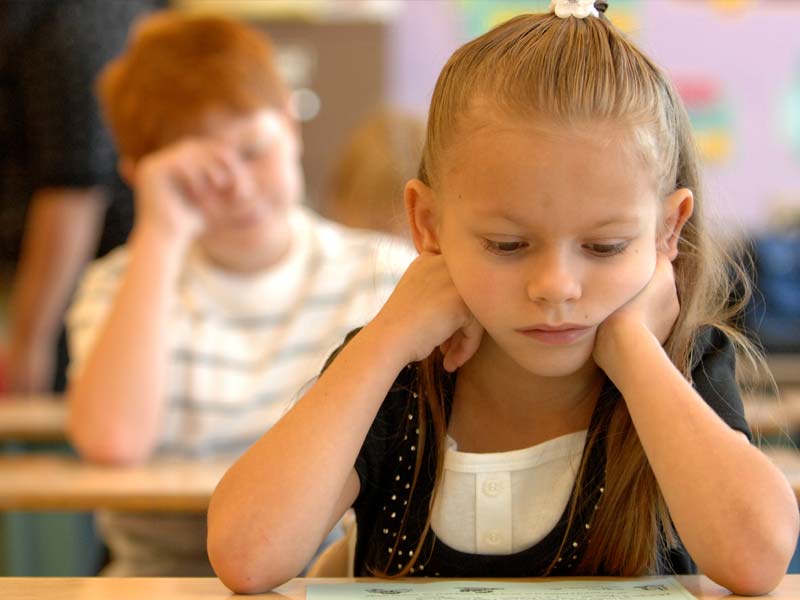We all struggle with worry from the constant pressures and situations we face daily. Our jobs, families, social events, and even pets can cause us stress. Did you know that your kids worry, too? Some might even deal with anxiety. That breaks our hearts, but it is common in our day.
If you’re not positive if your child shows signs of childhood anxiety or if you believe they do, but you’re not sure what to do about it, you’ve come to the right place. Below, we’ll discuss a few symptoms that will help you pinpoint whether your child might be dealing with anxiety. In addition to that, we’ll give you a few tips on how to handle the situation.
Keep reading so that you can be better prepared to deal with any anxiety that your child might be experiencing.
Some Fears are Normal
Kids fear a lot of things, including the dark, the dentist, getting bitten by a dog, or making new friends at school. It’s also normal for children to worry about getting punished or getting a bad grade on a test. These fears and worries are reasonable and to be expected.
What isn’t normal is when a child is plagued with fears and stress so much that it affects their bodies, their emotions, or their behavior consistently regarding the same things over and over, again. These kinds of anxieties don’t make it so that the child cannot function on a regular basis, but there are specific behaviors and emotions of a child who is struggling with anxiety that will be affected continuously. Fears become abnormal when they influence a child’s grades, friendships, sleep, or moods. We’ll discuss many examples below.
Behavioral Anxiety
If you believe that your child’s behavior does not match your other children’s responses that they had at his age, or it doesn’t match his peers, then he or she could have childhood anxiety. Here are some common behavioral tendencies to look for when trying to determine if your child has anxiety:
- When he is away from those closest to him like family or close friends, he acts out in anger, sadness, crying, or clinging.
- Rather than joining children at recess or on the playground, she chooses to isolate herself in her classroom away from other children.
- When he must participate in activities with peers, he decides to be silent or says he cannot succeed, without any legitimate reason.
- May have tantrums or meltdowns over going to public places including school, sports practice, or other activities outside of the home.
To summarize, if your child is dealing with behavioral anxiety, he or she typically despises being in social settings and hates to be away from what is comforting and reassuring to him or her, like familiar loved ones.
Bodily Anxiety
Another way to help you determine if your child is struggling with an abnormal amount of stress or fear is through his body movements. These can be expressed in a variety of ways such as the following:
- Constant headaches
- Persistent stomach pains
- Rejecting food in public
- Shaking, sweating, or fidgeting
- Feeling agitated or restless
- Warm face, clammy hands
Children, just like adults, encounter the “fight or flight” response when they sense something is going to happen that is scary or stressful. They can experience any of the above bodily reactions to those situations and even things that you, as their parent, cannot see. These would include feelings such as an uncontrollable heartbeat, feeling like it’s difficult to breathe, and affected nerves and digestion.
Although the “fight or flight” response is supposed to keep us from harmful situations, with anxious children, it occurs when there is no genuine danger for the child. The threat is just in their head, but their body is acting out against it through anxiety. Bodily anxiety can also be directly related to emotions.
Emotional Anxiety
Emotional anxiety can be hard to comprehend as a parent since you cannot see it like bodily or behavioral anxiety and you cannot feel what your child is feeling. However, many times, a child’s anxious emotions are displayed daily and continuously and don’t exactly seem healthy when compared to other children.
Emotional anxiety can also be closely linked to behavior and body anxiety. For example, if your child is overcome with worry being in social situations (emotional anxiety), it can lead to clinging and crying (behavior anxiety) and can head to shaking or sweating (bodily anxiety). Below we’ve listed a few more examples to help you in this process of identifying emotional anxiety:
- Recurring panic attacks and nightmares about being alone or losing a loved one
- Phobias over minor things such as insects or animals
- Crying constantly
- Has an extremely sensitive disposition
- Cannot control anger or is grumpy often
- Worries about the future
It’s essential for you as the parent to be in tune with your child’s emotions, but at times it can be tough to identify, and it can be very emotional for you to handle alone. That’s why we encourage you to find help for you and your child if you believe your child has signs of childhood anxiety.
How to Help When You Find Signs of Childhood Anxiety
As parents, we don’t want to admit that there might be something “wrong” with our child. We may tell ourselves that our child is merely going through a behavioral phase or an emotional time and that he will grow out of it soon. Growing out of it may be possible, however, if the tantrums or the fear of socializing or the headaches persist for weeks, then it is highly encouraged to have your child checked out by a specialist.
If you think your child might have childhood anxiety, call to schedule an appointment, and we can talk about all your options. We care about finding resolutions for children and families in all situations, including anxiety.

